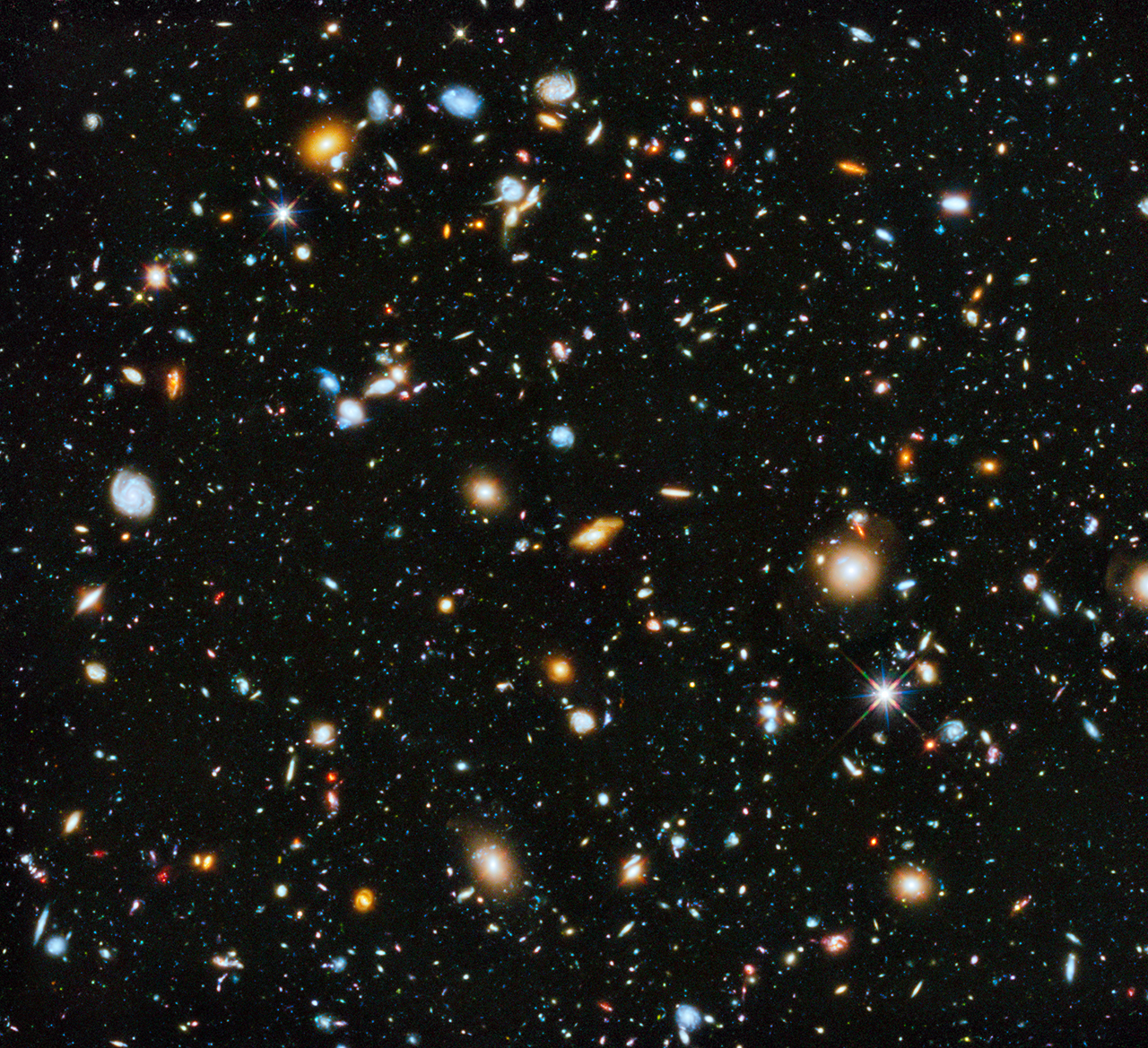A Galaxy Bonanza
This photograph of the universe taken by Hubble reveals more than 10,000 galaxies, including young ultraviolet ones.

Hubble Ultra Deep Field, 2014. Credit: NASA, ESA, H. Teplitz and M. Rafelski (IPAC/Caltech), A. Koekemoer (STScI), R. Windhorst (Arizona State University), and Z. Levay (STScI)
You’re looking at more than 10,000 galaxies—and for some, it’s their first time on public display. The portrait, released this past June, is a compilation of a decade’s, and 841 orbits’, worth of photographs taken by the Hubble Space Telescope as it’s drifted hundreds of miles above Earth. NASA calls the image “the most comprehensive picture ever assembled of the evolving universe—and one of the most colorful.”
The sparse flecks that sparkle like diamonds depict individual stars within our Milky Way, according to Hubble team member Rogier Windhorst. All of the other confetti-like spots of color—ranging from blue to red—each correspond to a faraway galaxy of a certain age. The blue ones are young, hot galaxies that emit ultraviolet light produced between five to 10 billion years ago, back when most stars in the universe were born. The reddish spots, meanwhile, represent galaxies much older and cooler than the baby blues, dating back to a few hundred million years after the Big Bang.
“When stars are first born they shine ultraviolet,” says Windhorst, but as the universe expands with time, it stretches light from blue to red, allowing astronomers to determine a galaxy’s age and distance from Earth based on the wavelength of light it emits.

Hubble’s new image is not this cosmic view’s first public debut, however. In 2004, NASA released the first depiction of the same spot in space, located inside the constellation Fornax, found in the southern sky just southwest of the huntsman-shaped constellation, Orion. That image, however, was less revealing, featuring only visible light (click on the slideshow above to see a larger version). In subsequent years, after installing a new camera on the telescope, NASA released more images of the region that captured both visible and near-infrared starlight (here’s one).
Now equipped with an ultraviolet-sensitive camera, Hubble has, since 2012, been able to uncover the young ultraviolet galaxies once hidden in space. The observations will allow astronomers to better understand a seminal stage of the universe’s evolution—what Windhorst calls the “heydays of cosmic star formation.”
Becca Cudmore is a freelance science journalist based in Brooklyn, New York. She was Science Friday’s summer 2014 web intern.